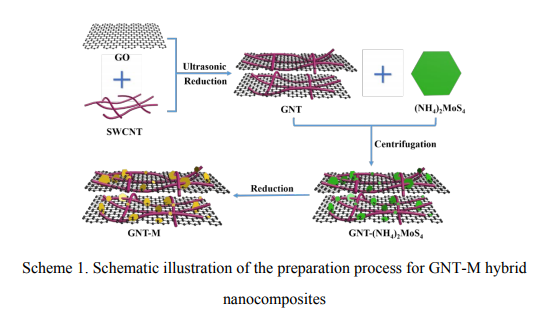Abstract;Three-dimensional molybdenum disulfide (MoS2) nanosheets grew on reduced graphene oxide/single-walled carbon nanotubes (GNTs). The resulting reduced graphene oxide/single-walled carbon nanotube/MoS2 (GNT-M) hybrid nanocomposites were used as efficient counter electrodes (CEs) in dye-sensitized solar cells (DSSCs). The microstructural details of the nanohybrids were characterized by transmission electron microscopy (TEM) and field-emission scanning electron microscopy (SEM), which showed an intertwined structure with an abundance of exposed active sites on the edge. X-ray diffraction and Raman spectroscopy were used to further confirm the binding of MoS2/GNT and the nanostructures. The composite electrode-based DSSCs with GNT-M10 showed a maximum power conversion efficiency of 8.01%, which is higher than that of a Pt CE (7.21%). Furthermore, GNT-M10 performed stably in the 1 week continuous test. Such excellent photoelectric performance can be attributed to the fact that MoS2 nanosheets with a 3D structure have more exposed active sites to promote the reduction and regeneration of I3– ions and the superior electrical conductivity of graphene and single-walled carbon nanotubes
